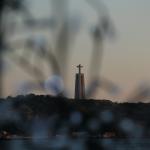William Swatos’s 1979 monograph, Into Denominationalism, is a model of careful historical and sociological judgment. Though he relies on secondary scholarship, the book is rich in historical detail, even though it covers a wide swath of history, from Henry VIII to the establishment of the Episcopal Church in the US. Swatos is also theoretically sophisticated, defending Weber’s church-sect typology by tracing the development of Anglicanism through a nuanced version of Weber’s model.
Two polarized factors shape whether a given communion acts as “sect” or “church”: Whether it finds itself in a situation of religious monopoly or a situation of religious pluralism; and, second, whether it accepts or rejects the world. Overlaying these distinctions on the church-sect contrast, Swatos comes up with the surprising category of an “established sect,” which he sets in contrast to “entrenched” and “dynamic” sects. The “established sect” is the “crux of the model,” and Swatos argues that it is a transitional, though not necessarily short-term, phase. This describes a situation in which one church remains a legally established church, but has elements of a world-denying sect within it. This creates various forms of disorientation; its situation is “anomic,” that is, a situation in which norms are confused. An established sect may have high demands for membership and a world-rejecting ideology (sect-like) while at accepts and mimics the mainstream worldview that it teaches its members to reject (12).
The Nonjurors broke from the church of England over Parliament’s demand that they swear loyalty to William and Mary. They saw “Parliament’s attempt to dictate religion as a . . . serious offence. From their point of view the entire question of the prerogatives of the church with respect to the state re the monarchy was in serious jeopardy of being answered wrongly. Parliament had first been so presumptuous as to remove God’s Anointed from the throne and to crown another as the lawful monarch. It was now even further.” The Nonjurors saw “pluralism and secularism . . . creeping into the bishops’ chairs” (53).
Swatos argues that the Nonjurors were sociologically self-aware. They represented what he calls the “exclusivism” and “anti-denominational” tendency of Anglicanism: “It is the sectarian element in Anglicanism that stands over against the much more frequently noted Anglican comprehensiveness. In the church-sect sense, it is a two-edged sword. It militates for churchliness [in a monopolistic setting]. However, when this status is not forthcoming, it moves more or less strongly, depending upon the historical circumstances and the relative strength of the other bodies with which it must contend, toward sectarianism” (54).
Ultimately, the sectarian establishment was on the losing side. The Toleration Act created space for Presbyterians, Baptists, Congregationalists to set themselves up as alternatives to the church of England. Exclusivism suited Anglicanism as long as it was a church, in a monopolistic situation; as the pluralism of English Christianity – and, eventually, even more of American Christianity – became legally acknowledged, sectarian Anglicanism wasn’t a viable option.
The Scottish Episcopal church, Swatos argues, was the harbinger of the future: “The church in Scotland, while not recognized at that point by the Church of England,. became the first effort at organized Anglicanism outside the royal monopoly. In these critical years, Anglicanism had developed a sectarian theology as well as a denominational establishment” (54).
Thus Anglicanism passed through an “established sect” phase on the way toward accommodation to denominationalism.











